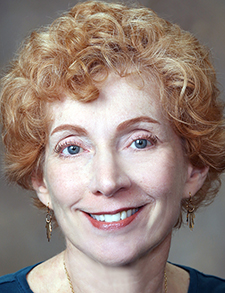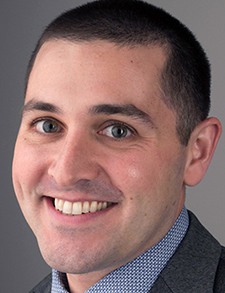 With worsening doctor shortages expected in many areas of medicine, including hospital medicine, the expected shortfall in primary care doctors is particularly sobering. A 2021 report from the Association of American Medical Colleges (AAMC) estimated that by 2034 the U.S. will have a shortage of between 18,000 and 48,000 primary care physicians (PCPs), with a shortage of non-primary care specialists between 21,000 and 77,000.1
With worsening doctor shortages expected in many areas of medicine, including hospital medicine, the expected shortfall in primary care doctors is particularly sobering. A 2021 report from the Association of American Medical Colleges (AAMC) estimated that by 2034 the U.S. will have a shortage of between 18,000 and 48,000 primary care physicians (PCPs), with a shortage of non-primary care specialists between 21,000 and 77,000.1

Dr. Kaufmann
Lisa Kaufmann, MD, is the medical director of the Appalachian Regional Healthcare System hospitalist program and clinical inpatient faculty at the Mountain Area Health Education Center Boone family medicine residency in Boone, N.C. She pointed out that changing demographics, including an aging population and continued immigration, is a primary driver of this trend. Current estimates project that the U.S. population will grow from about 334 million in 2023 to 363 million by 2034. This growth is expected to be particularly pronounced for Americans 65 and older, a population with high health care needs.1

Dr. Ricotta
A large part of the physician workforce is also approaching retirement age, another component of the projected shortage. Daniel Ricotta, MD, a hospitalist and associate program director of the internal medicine residency program at Beth Israel Deaconess Medical Center and associate professor of medicine at Harvard Medical School, Boston, added, “A big aspect of our workforce shortage is that physicians are practicing fewer hours per week than they used to and practicing for fewer years than they did in the past. You’re having higher attrition rates and stable matriculation rates.” Clinician burnout, exacerbated by COVID-19, may have further worsened the situation.
Dr. Kaufmann said, “Physician shortages were a problem 30 years ago, and it’s just gotten worse. You have deserts where the number of health care professionals is really low, particularly in rural areas.” Demographers predict the number of states receiving a grade of “D” or “F” for their physician shortages will increase from four in 2017 to 23 by 2030, with some of the worst physician shortage ratios in the West and South, and with many rural areas being the most strongly impacted.2
Current shortage impacts can be felt in many areas. In a 2019 poll, 35% of people said they had had trouble finding a doctor in the last two to three years.3 The Health Resources and Services Administration estimates the current need for an additional 17,000 PCPs, with about 100 million Americans living in areas without adequate numbers of health professionals.4 If minorities and other underserved populations used health care with the same frequency as those with fewer access barriers, the demand for primary care physicians would be even more pronounced.
Impacts
Even accounting for socioeconomic and other health care confounders, increasing the supply of primary care physicians lowers mortality rates. One 2019 study found that every 10 additional primary care physicians per 100,000 people were associated with a 51-day increase in life expectancy and decreased rates of mortality from cancer, cardiovascular disease, and respiratory illness of around 1%.5
“When people don’t have good access to primary care, they come to the hospital with later disease. They’re sicker, and it costs more to take care of them,” said Dr. Kaufmann. “And unless a patient has a very rare disease, the average primary care doctor will do better with them than if they get care from a bunch of different specialists with no primary care physician conducting the orchestra of their care.”
Dr. Ricotta noted that the transition out of the hospital can be more prone to medical complications when fewer primary care resources are available. This can contribute to increased hospital readmission rates, for which hospitals may be financially penalized. Added Dr. Kaufmann, “Multiple research studies have shown that hospital readmission after eight days of discharge is typically not due to any defects in the hospital care, but more to social determinants of care and follow-up appointment access.”
Dr. Ricotta pointed out that the paradigm of hospitalist medical care became more dominant as fewer primary care physicians became able to attend to their patients in the hospital themselves. He believes that worsening shortages in primary care might further increase patient volumes for hospitalists, as fewer primary care practices will have one of their own practitioners cover patients while in the hospital. “Volumes on those services are already accelerating rapidly, and I could see that adding pressure to hospitalists. But on the other hand, it’s also one way that hospitalists might help primary care physicians.”
Pipeline to PCPs
In 2006, the AAMC recommended that first-year medical school enrollment increase by 30%, to help combat physician shortages projected at that time. That goal was reached in 2018, with substantial increases in the number of doctors graduating from MD-granting institutions as well as osteopathic schools.6
However, the number of residency slots for graduating medical students has not kept pace with this growth, which has caused new problems. Dr. Kaufmann explained, “It used to be that unless there was a significant issue, a U.S. medical graduate would always match to a residency. Now that’s not always the case.”
Medicare reimburses hospitals for a substantial component of resident salaries, although most major hospitals also fund additional residency positions through clinical revenue to get sufficient physician coverage. A major driver behind the current insufficient number of residency positions is the Balanced Budget Act of 1997, which froze Medicare support of teaching hospitals’ graduate medical education funds at 1996 levels.
Dr. Ricotta pointed out that this increased difference between the number of medical student graduates and residency slots has meant that fewer graduates of international medical schools can now secure residency positions than in the past. Because of visa incentives, such graduates have been more likely to pursue primary care in rural and underserved regions than U.S. graduates.
Legislative approaches
Attempts to overturn this cap have not succeeded, but some successful legislation has supported some new Medicare-supported slots. The Centers for Medicare and Medicaid Services (CMS) recently phased in 200 new Medicare-funded physician residency slots, with an additional 800 new slots to be rolled in over five years.1 CMS gave priority for these slots to programs in current areas of physician shortage, with three-quarters of the new positions marked for primary care or mental health.7 (Note: The 2021 AAMC projections factor in these added positions.)
Although helpful, increasing the total number of residency slots available is insufficient for attracting more primary care physicians. In the U.S., the percentage of medical students opting to pursue medical specialties over primary care continues to increase. In the 2023 match cycle, some of the highest numbers of unfilled match positions were in specialties focused on primary care: pediatrics, internal medicine, and most pronouncedly with family medicine.8
One approach is funding residency positions outside of the Medicare funding system. The Teaching Health Center Graduate Medical Education Program, founded under the Affordable Care Act, aims to increase the number of physicians trained in community-based settings instead of hospitals to help expand health care access in underserved areas. More than 1,200 new family physicians have completed residency and entered the workforce since the program began in 2010.9 Dr. Kaufmann added, “People who have residency experience of what can be accomplished in a rural setting are much more likely to choose to practice in a rural area.”
Although additional legislation to increase the number of residency positions is needed, especially those marked for primary care, making primary care more financially attractive would also help. Dr. Ricotta thinks it is critical to support legislation that changes reimbursement models. Primary care physicians face increasing financial pressures to see greater numbers of patients in shorter visits.
Dr. Ricotta added, “The whole model of health care delivery disincentivizes people to go into primary care. Under a fee-for-service model, you get paid for doing things to patients, not preventing bad outcomes.” These financial pressures also make it more difficult for current primary care physicians to stay in practice, especially in rural areas where it is difficult to employ economies of scale.
Relatedly, advocacy efforts to reduce documentation burdens and administrative requirements might decrease physician burnout and allow more primary care physicians to continue practicing. Efforts to support physicians’ mental health, such as the Dr. Lorna Breen Health Care Provider Protection Act passed in 2021, are also key.10
Supporting and supplementing PCPs
In addition to supporting legislative efforts, doctors can advocate for high-quality primary care residency training, particularly in rural areas. In her own region, Dr. Kaufmann’s hospital created a family medicine residency program affiliated with the University of North Carolina, graduates of which will soon start practicing in the area.
Dr. Kaufmann said, “We can offer to teach, help these trainees going into very rural areas be comfortable providing a higher level of care.” She also noted that some of the doctors in remote rural areas care for very sick people so extra training from hospitalists can be very helpful.
Dr. Ricotta pointed out that hospitalists might also help reduce some of the burden on primary care physicians through post-discharge clinics, an approach that has been piloted at various sites across the country. In this model, a hospitalist staffs an outpatient office of recently discharged patients. “Some patients need follow-up care three to four days after hospitalization. Primary care physicians may not be able to accommodate that, and they don’t have inpatient medicine expertise,” he said. “Having a hospitalist as a bridge could be another way of supporting our primary care physicians.”
Given existing trends, it will be important to find ways to adapt and provide primary care with fewer physicians. Dr. Kaufmann is hopeful that we might leverage new technologies to help decrease the burden on primary care physicians. For example, appropriately implemented artificial intelligence programs might help with monotonous and time-consuming processes such as transcribing notes, hopefully improving the quality of life for physicians and potentially increasing efficiency to allow them to care for more patients.
Other primary care practitioners such as nurse practitioners and physician assistants may end up picking up even more of the primary care responsibilities. Although such professionals can give quality management much of the time, such systems may work best when these health care professionals can work closely with an overseeing physician. If this isn’t possible in person, Dr. Kaufmann pointed out that telemedicine opens up many opportunities for contributing expertise and oversight.
In general, the accelerated implementation of telemedicine due to COVID-19 offers a chance to bring quality primary care services to people in remote regions who may otherwise lack sufficient practitioners. But such measures can only go so far to ameliorate a deficit in physicians, who only have so many hours in a day to attend to remote patients.
“Unfortunately, there is only so much that we as hospitalists can do to help with this primary care problem,” said Dr. Kaufmann.
Ruth Jessen Hickman is a graduate of the Indiana University School of Medicine in Indianapolis. She is a freelance medical writer living in Bloomington, Ind.
References
- Association of American Medical Colleges. The complexities of physician supply and demand: projections from 2019 to 2034. AAMC website. https://www.aamc.org/data-reports/workforce/data/complexities-physician-supply-and-demand-projections-2019-2034. Published June 2021. Accessed June 29, 2023.
- Zhang X, et al. Physician workforce in the United States of America: forecasting nationwide shortages. Hum Resour Health. 2020;18(1):8. doi:10.1186/s12960-020-0448-3
- Boyle, Patrick. Physician shortage growing. American Association of Medical Colleges News. https://www.aamc.org/news/us-physician-shortage-growing. Published June 26, 2020. Accessed June 29, 2023.
- Health Resources & Services Administration. Health Workforce Shortage Areas web page. https://data.hrsa.gov/topics/health-workforce/shortage-areas., Updated June 28, 2023. Accessed June 29, 2023.
- Basu S, et al. Association of primary care physician supply with population mortality in the United States, 2005-2015. JAMA Intern Med. 2019;179(4):506-14.
- Boyle, Patrick. Medical school enrollments grow, but residency slots haven’t kept pace. American Association of Medical Colleges News. https://www.aamc.org/news/us-physician-shortage-growing. Published September 3, 2020. Accessed June 29, 2023.
- Centers for Medicare & Medicaid Services. CMS awards 200 new Medicare-funded residency slots to hospitals serving underserved communities. CMS website. https://www.cms.gov/newsroom/press-releases/cms-awards-200-new-medicare-funded-residency-slots-hospitals-serving-underserved-communities. Published January 9, 2023. Accessed June 29, 2023.
- Jain S. Primary care and emergency medicine have highest number of residency positions. The Compass website.https://www.trillianthealth.com/insights/the-compass/primary-care-and-emergency-medicine-have-highest-number-of-unfilled-residency-positions#:~:text=Generally%2C%20specialties%20focused%20on%20primary,%25)%20of%20available%20residency%20positions. Published April 16, 2023. Accessed June 29, 2023.
- Health Resources and Services Administration. Teaching Health Center Graduate Medical Education (THCGME) Program website. https://bhw.hrsa.gov/funding/apply-grant/teaching-health-center-graduate-medical-education. Updated May 2023. Accessed June 29, 2023.
- Robeznieks A. Congress passes Dr. Lorna Breen Act to promote physician mental health. American Medical Association website. https://www.ama-assn.org/practice-management/physician-health/congress-passes-dr-lorna-breen-act-promote-physician-mental. Published February 24, 2022. Accessed June 29, 2023.
This need, as the article states, has been around for over 30 years and getting worse. So, if we cannot get more PCPs, we need to utilize the ones we have more effectively. That can be accomplished by adopting and adjusting to the benefits of new technologies. One layers the roles of medical staff, as in the offices, with the physician doing “only” what they are best qualified for. Split the rest amongst NPs and PAs. Deploy remote smart clinics that do not require a medical attendant. The resources of NPs and PCPs are then “centralized” and shared with a larger number of remote smart clinics.
Excellent article which not only captures the historical legislation of physician shortage but also the current landscape with laudable solutions. Highlighting the value of primary care physicians is the key for access, quality, efficiency and cost to be achieved. We see what the primary care physician looks like today and hope to see a changed environment for tomorrow as a value added proposition for future physicians.